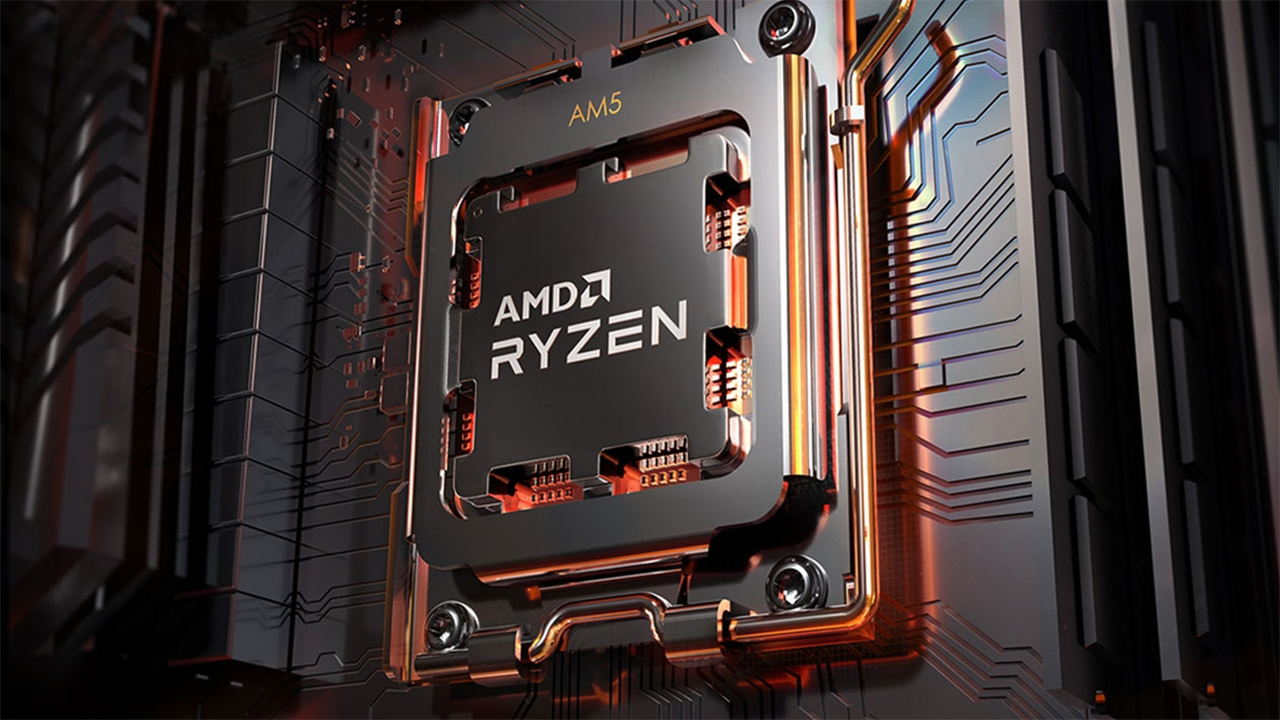AMD says dual-channel DDR5-6000 is the sweet spot for Ryzen 8000G APUs

AMD is gearing up to release its Ryzen 8000G-series accelerated processing units for desktops with built-in RDNA 3-based GPU, and the latter tend to be hungry for memory bandwidth. PCWorld decided to ask AMD whether users buying advanced versions of AMD's next-generation desktop APUs should also buy expensive memory kits for their new rigs to avoid any performance bottlenecks for built-in Radeon GPUs. The company explained that its Ryzen 8000G will be fine with a dual-channel DDR5-6000 memory subsystem.
"So, first thing is dual-channel RAM, absolute must, that is a huge bandwidth advantage," Donny Woligroski, Technical Marketing Manager at AMD, told PCWorld. "Do not skimp, you gotta have dual-channel. DDR5-6000 is pretty cheap nowadays. If you can do dual-channel DDR5-6000, you are gonna hit those great frame rates and really playable performance and that is definitely that we will steer people."
A dual-channel DDR5-6000 memory subsystem offers a peak memory bandwidth of 96 GB/s, which is shared between Zen 4 CPU cores, Radeon 7000-series iGPU, and an NPU. AMD previously said that DDR5-6000 memory is the sweet spot for AMD's Ryzen 7000-series CPUs featuring from eight to 16 Zen 4 cores, so it looks like the company is just re-iterating its claims.
Meanwhile, 96 GB/s does not seem to be a lot for a decent iGPU. AMD's Ryzen 7 8700G is expected to feature the company's range-topping RDNA 3-based Radeon 780M integrated GPU with 768 stream processors. The mobile version of the Radeon 780M can operate at clocks between 800 MHz and 2700 MHz, thus offering FP32 performance of up to 8.29 TFLOPS, making it a powerful graphics processor. To add some context, AMD's Radeon RX 6600 XT features a peak FP32 performance of 8.928 TFLOPS and boasts a 256 GB/s peak memory bandwidth and 32 MB of Infinity Cache.
Meanwhile, we should remember that the performance of virtually all high-performance integrated GPUs is constrained by memory bandwidth, so AMD and Intel are in the same boat here. Therefore, AMD's Ryzen 8000G promises to be very competitive regarding graphics performance. A Ryzen 7 8700G-based rig should also not be too expensive as one can grab a 32 GB DDR5-6000 dual-channel kit for less than $100.
Another advantage of AMD's Ryzen 8000G APUs is that they are part of the AM5 platform, which the company promised to support for the next few years.
Get Tom's Hardware's best news and in-depth reviews, straight to your inbox.

Anton Shilov is a contributing writer at Tom’s Hardware. Over the past couple of decades, he has covered everything from CPUs and GPUs to supercomputers and from modern process technologies and latest fab tools to high-tech industry trends.
-
ThomasKinsley Meanwhile the max speed acknowledged on AMD's website is only 5200mhz. I cannot understand how engineers can recommend sweet spots above stated technical specifications that the manufacturer is willing to stand by. We all know the product can handle higher speeds.Reply
https://www.amd.com/en/products/apu/amd-ryzen-5-8600g -
CerianK ReplyThomasKinsley said:Meanwhile the max speed acknowledged on AMD's website is only 5200mhz. I cannot understand how engineers can recommend sweet spots above stated technical specifications that the manufacturer is willing to stand by. We all know the product can handle higher speeds.
https://www.amd.com/en/products/apu/amd-ryzen-5-8600g
Yes, same for 8700G. Full published specs (e.g., GPU 2900 MHz). -
thestryker AMD's performance with 5200 is really bad compared to Intel's bandwidth scaling. I think that's why AMD has a specific recommendation on higher than technically supported whereas Intel just talks about high speed memory without specifics (most of the time, they really pushed 8000+ with 14th gen in some of their marketing). AMD did the same thing with Zen 3 and 3600 which officially only supports 3200.Reply
I wish they'd asked about using truly high speed memory with the 2:1 U:M ratio with the APU. Hopefully when the reviews come out reviewers will be testing both configurations just to see if there's a benefit. -
taz-nz Reply
It's because the official supported speed complies with the Jedec standard for DDR5 which requires memory to run at 1.1V, anything else is technical out of spec from the memory controller, and thus it's up to the memory manufacture to guaranty that the memory will work at out of spec speeds and voltages.ThomasKinsley said:Meanwhile the max speed acknowledged on AMD's website is only 5200mhz. I cannot understand how engineers can recommend sweet spots above stated technical specifications that the manufacturer is willing to stand by. We all know the product can handle higher speeds.
https://www.amd.com/en/products/apu/amd-ryzen-5-8600g
If AMD say their CPU will work with DDR5-6000 it has to work with all DDR5-6000 ram, and that makes its AMD's problem, and they aren't going to take on someone else's product issues.
If you do a search for 32GB DDR5-6000 ram kits that run at 1.1v you will only find this kit form TeamGroup: https://www.teamgroupinc.com/en/product-detail/memory/T-CREATE/classic-u-dimm-ddr5-black/classic-u-dimm-ddr5-black-CTCCD532G6000HC48DC01/Which has horrible CL48 timing.
If you want a 32GB DDR5-6000 kit with low latency like CL30, you end up with this:
https://www.corsair.com/us/en/p/memory/cmk32gx5m2b6000z30/vengeance-32gb-2x16gb-ddr5-dram-6000mt-s-cl30-amd-expo-memory-black-cmk32gx5m2b6000z30But it runs at 1.4V so well out of the Jedec spec. -
Notton I am not surprised DDR5-6000 is the recommended RAM. I doubt it works with anything faster, just like the desktop Ryzen 7000 series.Reply -
TerryLaze Reply
Not just outside of jedec but dangerous for the CPU, vsoc was the reason for the exploding cpus.taz-nz said:But it runs at 1.4V so well out of the Jedec spec.